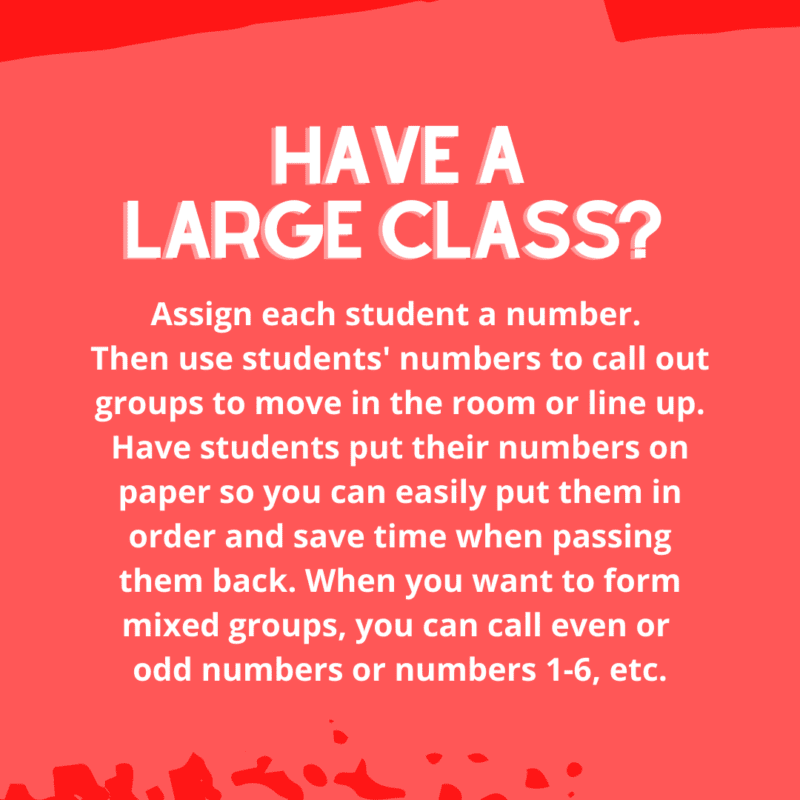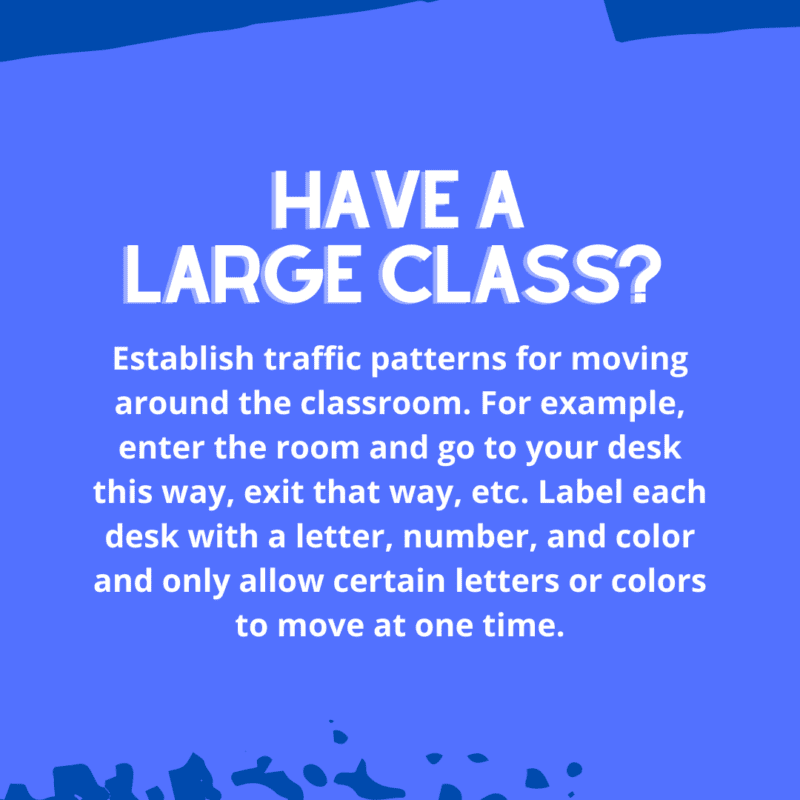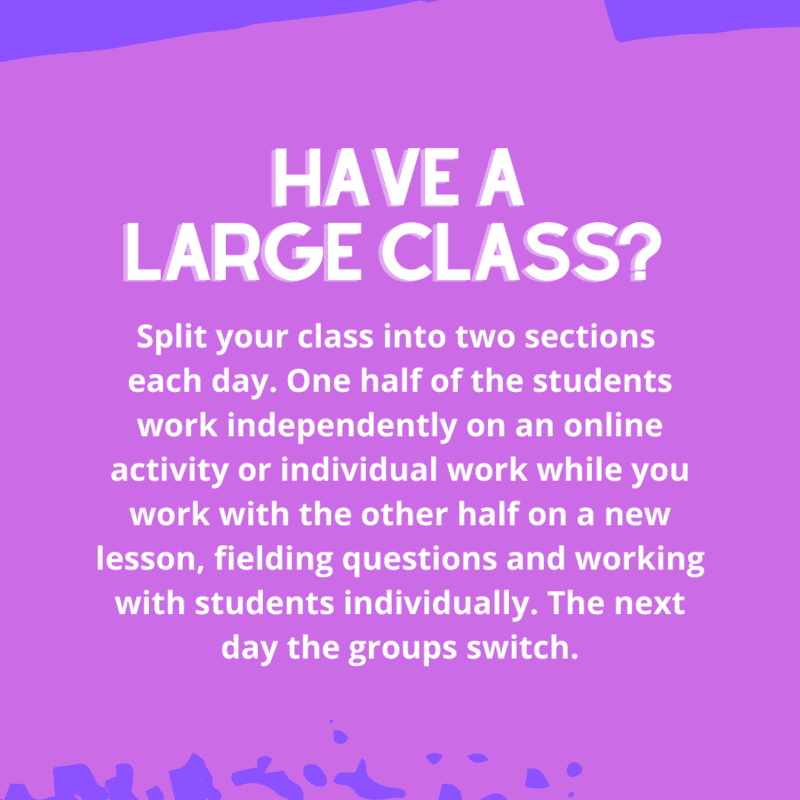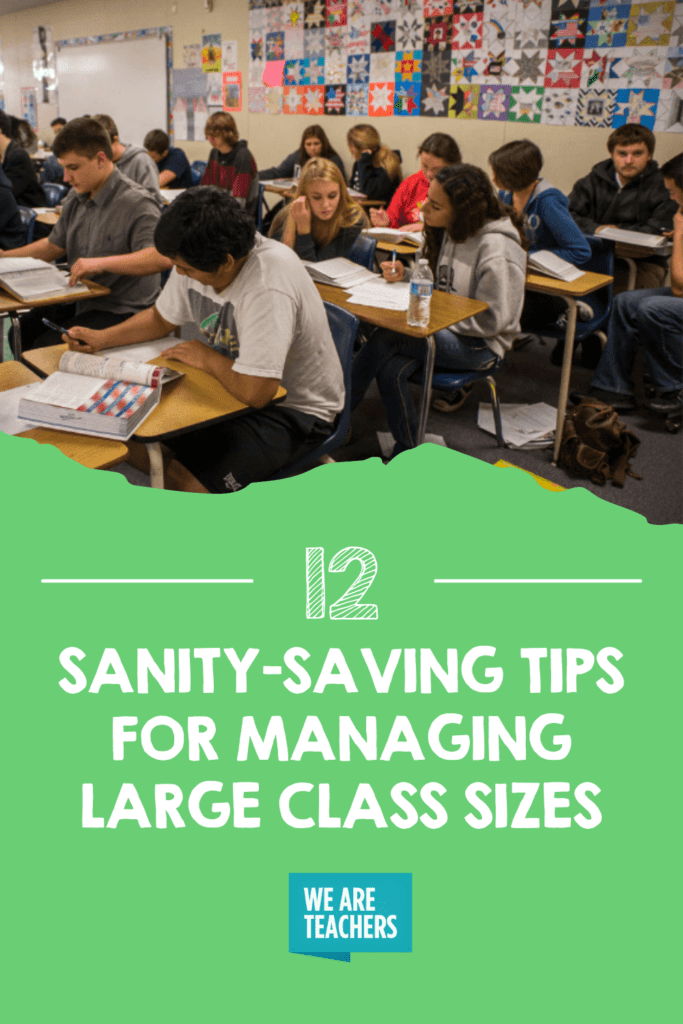The call for the reduction of large class size has been a centerpiece of education reform for decades. According to the NEA, smaller class size benefits students in many ways, including early identification of learning disabilities, closing the racial achievement gap, improved graduation rates, and improved student behavior. In addition, it allows teachers to provide more one-on-one interaction, hands-on activities, and a generally slower, more focused approach.
Bottom line: Large class sizes aren’t ideal for anyone, but unfortunately, they are often the reality. That said, what can you do to manage large class sizes? Here are a few suggestions to help you not only manage your students but help them thrive.
1. Focus on structure and consistency
As one teacher on our WeAreTeachers Facebook group put it: Routine rocks! The only way to sanely manage a large class size is to lay down clear, consistent expectations, procedures, and routines and consistently enforce them. Organize your classroom in a way that students can find what they need quickly and easily.
2. Employ flexible grouping
Leverage the power of teamwork and break students into small groups whenever you can. Students will benefit from working in a smaller group, and you will be able to rotate among them, giving valuable one-on-one time, especially to the students who need it the most. Mix up the ways you form groups with these strategies. Rotate groups to create balance as you get to know the students better.
3. Start class with a warm up
So much class time is wasted waiting for students to get settled and focused at the beginning of the period. Use a timed warm-up activity, like these for middle schoolers, to establish the expectation that work begins as soon as students enter the classroom.
4. Minimize downtime
In other words: keep ‘em busy! Plan carefully to prevent ‘dead’ time in the classroom. Design your lesson plans in blocks of time. Weave in different types of learning, especially kinesthetic. Have fast finisher activities readily available. Set timers for focused work time. Let students read a book of their choice when they have finished their work.
5. Keep track of the numbers
Assign each student a number. Then use students’ numbers to call out groups to move in the room or line up. Have students put their numbers on paper so you can easily put them in order and save time when passing them back. When you want to form mixed groups, you can call even or odd numbers or numbers 1-6, etc.

6. Control the flow
Establish traffic patterns for moving around the classroom. For example, enter the room and go to your desk this way, exit that way, etc. Label each desk with a letter, number, and color. Only allow certain letters or colors to move at one time. Set a policy for sharpening pencils and bathroom visits, which can be a distraction to the rest of the class. Give each student three chips (or jewels, or popsicle sticks) and have them redeem one each time they need to get out of their seat.

7. Hold their attention
Nothing will cause disorder and inattention faster than a long, drawn-out lecture. Keep your lessons short and engaging. Post goals and objectives and clearly lay out assignments in stages so that students can self-pace. Employ engaging tech tools to boost engagement. Give kids a countdown when transitioning between activities so they don’t get off track.
8. Divide your class in half
One teacher on our WeAreTeachers Helpline shared that she splits her class into two sections each day. One-half of the students work independently on an online activity or individual work while she works with the other half on a new lesson, fielding questions and working with students individually. The next day the groups switch.

9. Get creative about connecting with students
One of the biggest challenges about large class size is finding time to get to know your students on a personal level. It may take a little creativity to connect. Host a “lunch bunch” once a week for a few students at a time. Create surveys asking students about their interests. Play a quick round of “would you rather” or other get to know you activity as a class warmup. Set up office hours before or after school. Choose a different set of five to six students to focus on and rotate every few days.
10. Increase student responsibility
When you have a large class, the workload should be shared, just like in a large family. Assign students jobs like passing out papers or supplies, collecting homework, etc., on a rotating basis. Break your classroom into teams and appoint team leaders to help manage things. Use peer and self assessment for formative learning activities.
11. Build a strong class culture
Give students ownership over making your classroom environment an enjoyable and productive one. After all, most students don’t like large classes any more than teachers do. Ask for their suggestions about what would help them do their best. Fostering a “We’re all in this together” attitude will encourage positive behaviors. Reward students for positive behavior and on-task work time using a point system, a jewel jar, or a motivating program like Class Dojo.
12. Surrender
Despite your best efforts to streamline your classroom’s operation, classes with more students simply take longer to instruct and manage in many ways. Accept that certain things will just take longer, and the volume will be louder, when you have a larger class. Raging against it will only bring you angst. Take a deep breath and know that you’re doing your best.
Want more articles like this? Be sure to subscribe to our newsletter.
Plus, 7 Classroom Management Techniques That Really Work.


